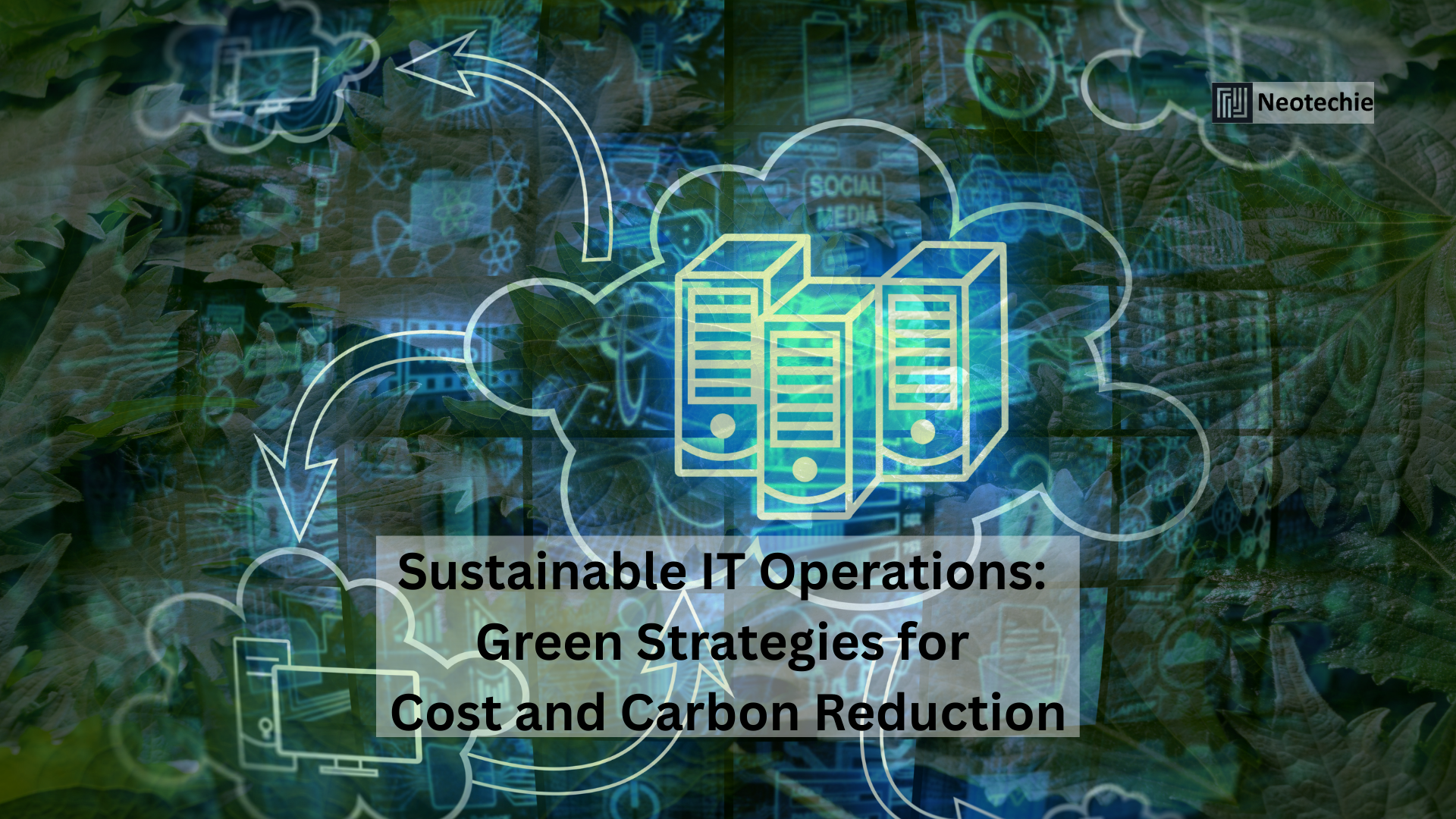Sustainable IT Operations — Green Computing Strategies for Cost and Carbon Reduction
Driving Environmental Responsibility and Business Efficiency Through IT
As businesses increasingly depend on digital infrastructure, the environmental footprint of IT operations has become a strategic priority. Sustainable IT operations, also known as green computing, focus on minimizing energy consumption, reducing e-waste, and optimizing resource use while maintaining performance. This approach addresses environmental responsibilities, reduces operational costs, and strengthens long-term competitiveness.
Implementing sustainable IT practices is a key driver of business transformation, enabling companies to achieve efficiency, regulatory compliance, and sustainable growth.
What Sustainable IT Operations Bring to Enterprises
- Energy-Efficient Infrastructure
- What: Design, implement, and manage IT infrastructure that consumes minimal energy while delivering optimal performance.
- Why: Inefficient servers, storage, and networking devices contribute to higher electricity bills and increased carbon emissions.
- How: Use energy-efficient hardware, server virtualization, and cloud migration strategies. For example, shifting workloads to green-certified cloud data centers can reduce power consumption, lower costs, and decrease environmental impact while ensuring scalable performance.
- Intelligent Resource Management
- What: Dynamically monitor and allocate compute, storage, and network resources to avoid waste and maximize utilization.
- Why: Over-provisioned systems consume unnecessary energy, leading to increased operational expenses.
- How: Implement AI-driven orchestration and predictive analytics to adjust resources in real-time. For instance, a retail company optimizes server usage during off-peak periods, reducing energy consumption without compromising operational performance.
- Reduction of Electronic Waste (E-Waste)
- What: Extend IT asset lifecycles and ensure responsible disposal or repurposing of outdated hardware.
- Why: E-waste not only harms the environment but also represents a financial loss if assets are discarded prematurely.
- How: Track asset lifecycles, maintain equipment regularly, and partner with certified recycling programs. For example, enterprise laptops can be refurbished and redeployed internally, reducing e-waste and saving on replacement costs.
- Sustainable Cloud Adoption
- What: Move workloads to cloud platforms designed for energy efficiency and environmental responsibility.
- Why: Traditional on-premises systems may consume more energy and have limited scalability for sustainable growth.
- How: Choose cloud providers with green certifications and leverage features like auto-scaling and optimized workload distribution. For example, data-intensive analytics workloads can run on green cloud infrastructure, reducing energy use while ensuring high-performance processing.
- Monitoring, Reporting, and Continuous Improvement
- What: Track energy consumption, carbon footprint, and efficiency metrics to drive ongoing optimization.
- Why: Without measurement, it’s impossible to evaluate sustainability initiatives or identify improvement areas.
- How: Use dashboards and analytics tools to report on power usage effectiveness (PUE), energy consumption, and carbon emissions. For instance, IT operations can monitor server loads and cooling efficiency to make adjustments, achieving measurable cost savings and environmental benefits.
Why Sustainable IT Operations Matter for Businesses
- Cost Reduction: Optimizing energy use and resource allocation directly reduces operational expenses.
- Environmental Responsibility: Minimizes carbon footprint and contributes to corporate sustainability goals.
- Regulatory Compliance: Supports adherence to environmental regulations and reporting standards.
- Operational Efficiency: Ensures resources are used effectively, improving overall IT performance.
- Brand Reputation: Demonstrates commitment to sustainability, enhancing trust with stakeholders.
Driving Business Transformation Through Sustainable IT
- Efficient Digital Operations: Green IT practices optimize energy use and streamline infrastructure management.
- Strategic Cost Management: Reduced energy and asset costs free resources for innovation and growth.
- Sustainable Growth: Environmentally responsible operations support long-term resilience and market competitiveness.
- Innovation Enablement: Optimized IT environments allow investment in new technologies and initiatives.
- Stakeholder Engagement: Commitment to sustainability strengthens relationships with customers, employees, and investors.
How Neotechie Can Help
At Neotechie, we assist enterprises in adopting sustainable IT operations:
- Implement energy-efficient infrastructure and virtualization strategies to optimize performance.
- Deploy AI-driven resource management for real-time optimization and energy reduction.
- Establish e-waste reduction programs and asset lifecycle management to minimize environmental impact.
- Guide sustainable cloud adoption with energy-conscious workload distribution.
- Provide monitoring, reporting, and continuous improvement frameworks to track energy usage, carbon footprint, and operational efficiency.
Sustainable IT operations combine environmental responsibility with operational efficiency, enabling businesses to reduce costs, minimize carbon footprint, and drive long-term transformation. Neotechie helps organizations implement green computing strategies to achieve measurable impact and sustainable growth. 🌱★

